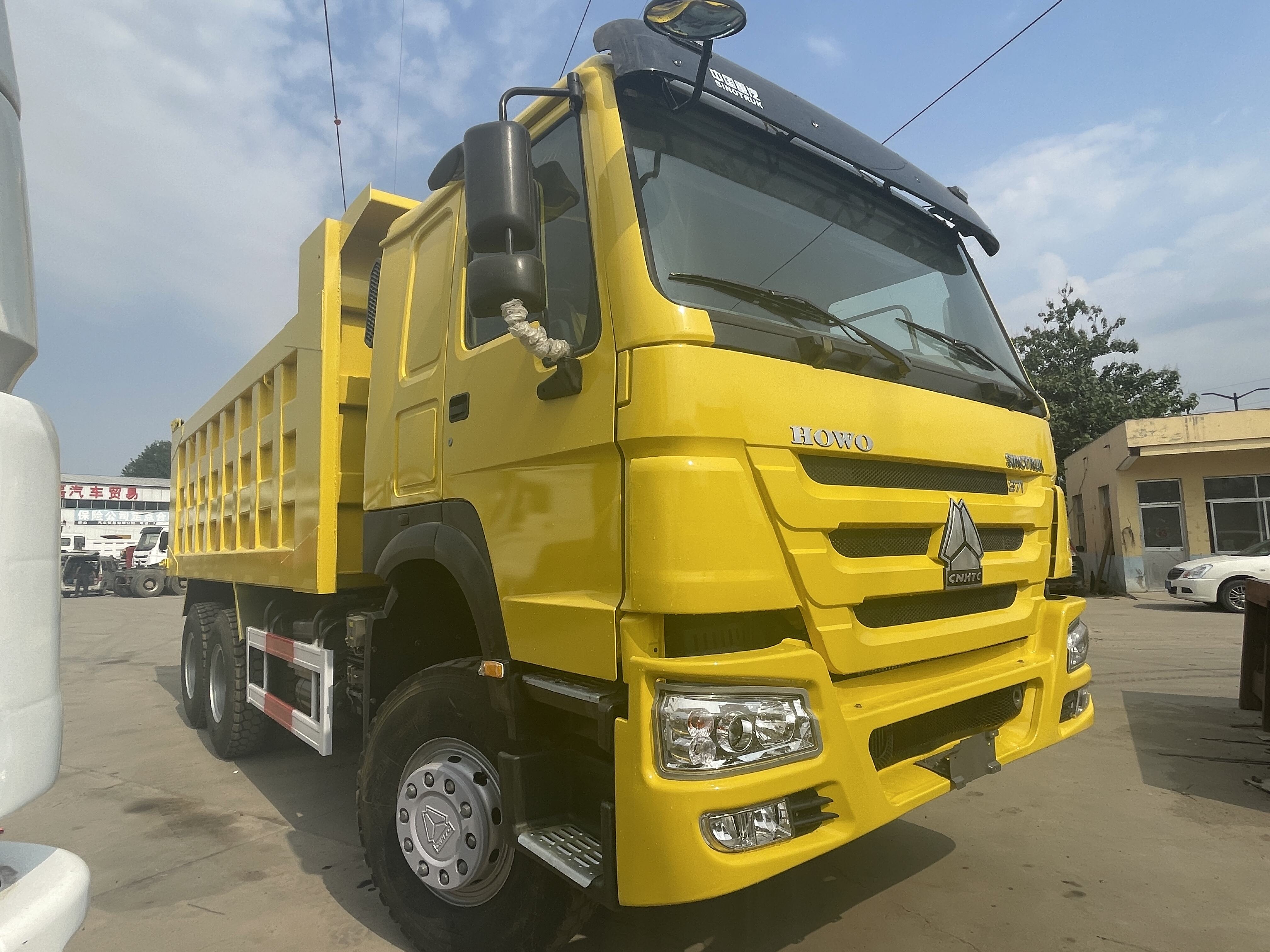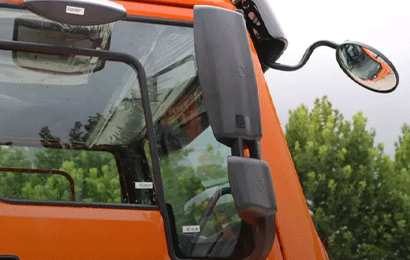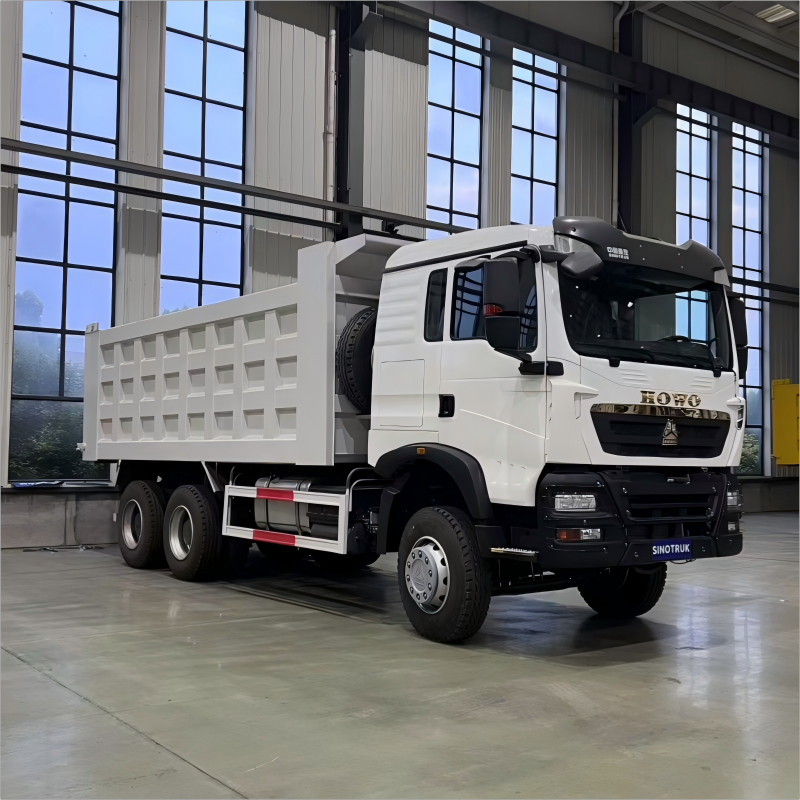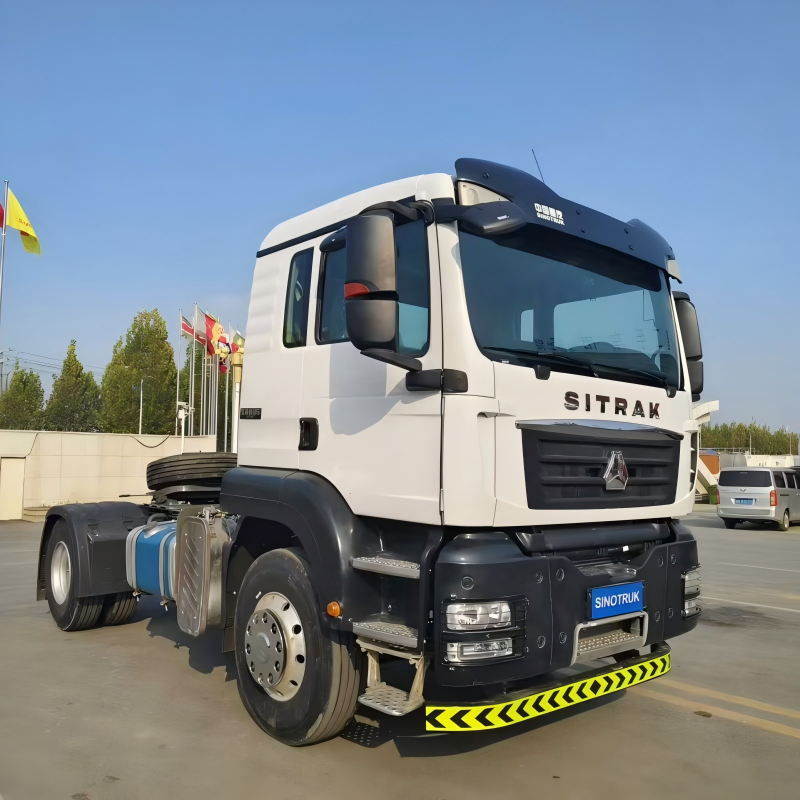Engine Types and Horsepower: Core Drivers of Used Dump Truck Performance
Common Engine Configurations in Used Dump Trucks
Most used dump trucks come equipped with either inline six cylinder or V8 diesel powerplants, producing anywhere between 300 and 600 horsepower. These engine setups give good pulling power when needed for hauling heavy loads, plus they tend to be pretty fuel efficient too. The older ones that are over a decade old generally have mechanical controls for their engines, whereas newer refurbished models are starting to include electronic fuel injection systems to meet stricter emissions standards. When shopping around, many buyers look for engines that don't have complicated after treatment systems because these parts can break down easily and cost a fortune to fix later on down the road.
How Horsepower Affects Hauling and Efficiency in Used Dump Trucks
The 2023 Heavy Duty Fleet Analysis points out something interesting about dump trucks. Those running between 400 to 450 horsepower seem to strike just the right balance when it comes to getting the job done efficiently. These trucks can typically move around 15 to 20 tons of material while still managing an average fuel economy of 6.2 to 7.1 miles per gallon. What happens though when operators go beyond 500 horsepower? Well, fuel consumption jumps by approximately 18% during those times when the engine isn't working at full capacity, which obviously cuts into bottom line profits. Another thing worth noting is how mismatched horsepower affects equipment lifespan. Trucks with underpowered engines forced to tackle steep mountain grades often see their clutches wear out much faster than expected sometimes as much as 30% sooner. This clearly shows why matching engine power to actual workload requirements remains so important in fleet management decisions today.
Diesel Efficiency and Fuel Economy in High-Mileage Used Models
Diesel engines that have clocked high mileage tend to drop somewhere between 8 and 12 percent in fuel efficiency as injectors start wearing out and turbochargers begin to degrade over time. But there's good news on the horizon for these workhorses. When mechanics rebuild the fuel system or overhaul the cylinder heads, they can actually bring back around 92% of what the engine originally delivered straight from the factory. The older pre-2010 models are generally easier on the wallet when it comes to repairs too. These engines don't come with all those fancy emissions control systems that drive up costs. Labor rates average about $23 per hour for fixing them, while newer ones equipped with SCR technology run closer to $38 an hour because technicians need special tools and training just to diagnose problems properly.
Cummins vs. Detroit Engines: Reliability in 10-Year-Old Used Dump Trucks
Two leading engine platforms dominate the used market:
- Architecture A: Offers 7.3% better fuel economy but experiences 22% more frequent coolant system repairs
- Architecture B: Requires specialized tooling but sees 40% fewer major overhauls before 500,000 miles
Fleet data indicates hydraulic-driven auxiliary systems provide 14% longer service intervals than gear-driven alternatives in similar operating conditions, enhancing uptime in vocational applications.
Transmission Systems in Used Dump Trucks: Manual, Automatic, and Integrated Powertrains
Manual vs. Automatic Transmissions: Trade-offs for Heavy-Duty Used Dump Trucks
Older used dump trucks still often come with manual transmissions, which give drivers better control when shifting gears something that really matters when going up steep hills or carrying different weights. According to a report from the trucking industry back in 2022, manual trucks actually save around 8 to 12 percent on fuel in those rough off-road situations compared to their older automatic counterparts. On the flip side though, automatic transmissions make life easier for operators who spend hours doing the same thing day after day in city traffic. The folks at Commercial Fleet Analytics looked into this in 2023 and discovered that mistakes related to shifting dropped by about 18 percent in vehicles with automated systems, showing just how much difference automation can make in certain work environments.
Benefits of Integrated Powertrains in Modern Used Dump Truck Models
Newer used dump trucks come equipped with smart powertrain systems these days. These advanced setups blend automatic gear shifting with sensors that actually predict load conditions, so they can switch gears depending on what's being hauled and the road conditions. The result? Around 30 percent less wear on clutches when compared to regular manual transmissions during those long hauls where trucks rack up the miles. And despite all this automation, these systems still manage to keep about 95% of the raw power capability that manual transmissions offer. Truck drivers who've moved up from older models tell us they're getting roughly 22% quicker turnaround times when dealing with different types of loads throughout the day. This happens because there's less time spent waiting between shifts and the gears just seem to pick themselves at exactly the right moments for maximum efficiency.
Transmission Maintenance Costs Across Pre-Owned Dump Truck Fleets
Manual transmission rebuilds for a dump truck that's been around for a decade usually run somewhere between seven thousand five hundred and twelve grand. The price jumps up by about forty percent when dealing with automated systems because of all the electronics involved. However, companies that go with integrated powertrain setups tend to see half as many unexpected breakdowns during those first two hundred thousand miles after buying the truck compared to regular automatics. Budget minded folks shopping for these vehicles should really focus on finding ones with good records of regular fluid changes. Automatic transmissions that haven't had proper maintenance history often fail three times more frequently once they hit the hundred thousand mile mark.
Top Brands and Model Performance in the Used Dump Truck Market
Freightliner, Kenworth, and Peterbilt: Resale Value and Long-Term Reliability
When it comes to used dump trucks, Freightliner, Kenworth, and Peterbilt are the big players in the market. These brands command around 12 percent more residual value after five years according to Commercial Truck Research from last year. What makes them stand out? Well, their trucks keep about 85 percent of component durability in those critical areas like transmissions and hydraulics even after clocking 8,000 operational hours. This kind of longevity explains why they fetch prices 18 to 24 percent higher in secondary markets compared to other brands. The companies have built solid reputations over time for how well their trucks hold up structurally and how easy it is to find replacement parts when needed. All these factors together give potential buyers peace of mind knowing they're making a worthwhile investment for the long haul.
Peterbilt 348 and Freightliner Cascadia: Field Performance After 5 Years
Field data from units with over 150,000 miles reveals notable differences in long-term performance:
| Metric | Peterbilt 348 | Freightliner Cascadia |
|---|---|---|
| Engine overhaul rate | 22% | 31% |
| Frame corrosion cases | 8% | 15% |
| Avg. repair cost/mile | $0.18 | $0.23 |
These outcomes reflect Peterbilt’s use of stainless steel exhaust components and Freightliner’s aerodynamic stress patterns in dump body mounting designs, which influence structural longevity.
Premium Brands vs. Repair Frequency: Insights for Used Dump Truck Buyers
Despite higher initial costs, premium brands exhibit 23% lower annual repair frequency (Heavy Truck Reliability Index 2024), reducing total cost of ownership. Buyers focused on vocational durability should prioritize models equipped with:
- Fully welded (not bolted) subframes
- SAE J1939-compliant wiring harnesses
- Factory-installed wet kit hydraulic systems
This configuration reduces unplanned downtime by 34% compared to retrofitted systems in similar used models, delivering measurable operational advantages.
Axle Configurations and Weight Ratings: Matching Used Dump Trucks to Job Demands
Single vs. Tandem Axles: Load Capacity and Stability in Used Models
Most single rear axle dump trucks can carry between 10 and 15 tons, which works great for smaller construction jobs and deliveries around town where being able to turn around in tight spaces matters a lot. When we look at tandem axle setups, they basically double that capacity range to somewhere between 20 and 30 tons while also standing up better on rough terrain. This extra stability makes all the difference when working in mines or on big infrastructure projects where the ground isn't always flat. According to some recent industry research from 2023, these tandem models actually have about 40 percent fewer problems with cargo shifting during climbs compared to their single axle counterparts. That kind of performance translates directly into safer operations and less downtime for maintenance crews.
Understanding GVWR and Legal Compliance for Pre-Owned Dump Trucks
The Gross Vehicle Weight Rating or GVWR basically tells us what's the heaviest a vehicle can be when it's running safely on the road. This includes everything from cargo and fuel to people inside. The federal government has set some pretty strict rules too, limiting how much weight can be carried across two axles on highways to around 34 thousand pounds. Going over this GVWR isn't just against the law though. According to research from the National Transportation Institute back in 2022, vehicles that regularly carry extra weight end up needing new brakes about 23% more often each year. And let's not forget about those pesky fines and possible stops by authorities if caught violating these weight limits. All this makes good weight management absolutely essential for anyone who wants to avoid both financial headaches and safety risks down the road.
Case Study: Axle Stress and Durability in 6x4 Used Dump Truck Applications
A five-year study of 6x4 used dump trucks in quarry operations found:
- U-joints fail 37% faster when hauling rock versus loose soil
- Reinforced suspension systems extended service intervals by 300 hours
- 74% of units maintained original weight ratings after 8,000 hours with quarterly inspections
Selecting the right axle configuration based on material type and terrain significantly reduces mechanical stress and unplanned downtime in pre-owned fleets.
Frequently Asked Questions (FAQ)
What engine types are common in used dump trucks?
Most used dump trucks are equipped with either inline six-cylinder or V8 diesel powerplants, producing 300 to 600 horsepower.
How does horsepower affect the hauling efficiency of dump trucks?
Dump trucks with 400 to 450 horsepower balance efficiency and fuel economy, but those exceeding 500 horsepower can have increased fuel consumption when not working at full capacity.
Why are manual transmissions more popular in older dump trucks?
Manual transmissions afford drivers better control, especially when dealing with steep inclines, and are generally more fuel-efficient in off-road conditions.
What are the advantages of integrated powertrains in newer used dump trucks?
Integrated powertrains offer automatic smart gear shifting based on load and road conditions, resulting in reduced clutch wear and faster turnaround times.
How do axle configurations impact dump truck performance?
Single rear axle trucks offer maneuverability for smaller jobs, while tandem axles provide higher load capacity and greater stability on uneven terrains.







